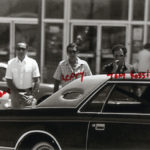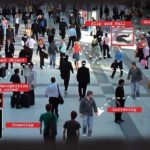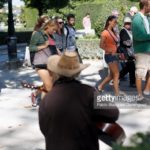Bloomberg is all up in arms about 2016-baltimore-surveillance-project. Their objections are unreasonable because the original premise is false, the idea that individuals have a right to privacy in a public venue. There is nothing even remotely reasonable about this stance. It also may give the reader insight into the paranoid personality that hold to this view.
The picture upper left is an FBI surveillance photograph of Donnie Brasco and two mafia associates. Brasco is an undercover FBI agent and probably covered ten agents deep in this surveillance. The crooks may claim that they have a reasonable expectation of privacy. But that disappears when one of the three buddies going about their business, is an FBI agent.
The second is from a surveillance system called BOSS. It appears to be monitoring a mall. Among the capabilities is facial recognition software and the ability to focus in on a particular individual and then back track his activities. Look at the picture again. There are at least thirty individuals in close proximity to the middle of the picture who could supply the same information.
Finally the third picture is in Spain a street musician is in a public park playing to tourists. What is his expectation of privacy? How many cameras can you count? How many are unseen but ever ready?
It is possible to track your every move in public without using technology. As we go about our daily routine we and those around us witness all sorts of behaviors in public, some can be evaluated and instantly discounted. Other behaviors may require interaction or avoidance. We may be aware when our actions require or cause a reaction on the part of a bystander.
Want privacy don’t go out in public. To paraphrase the Supreme Court; a person has a reasonable expectation of privacy based upon what a “reasonable man” or society at large is prepared to grant”. What these critics are complaining about isn’t the fact that they are being observed, but the observations are being recorded and events may be captured, stored, retrieved and evaluated at a later time. Theoretically, this could be done with a legion of interviewers armed with number two pencils and Big Chief tablets.
Read the article again, this isn’t about capturing images through brick walls or eavesdropping. This about the possibility of being observed walking down the street. If this is a real concern for you, remember tin foil hats and don’t look up, spy satellites.


